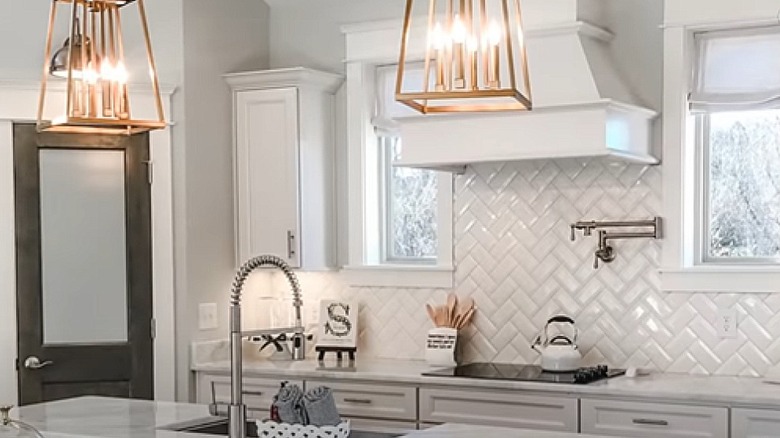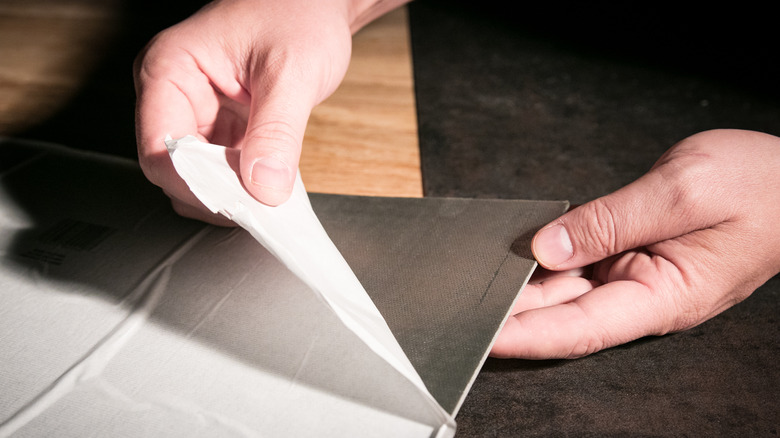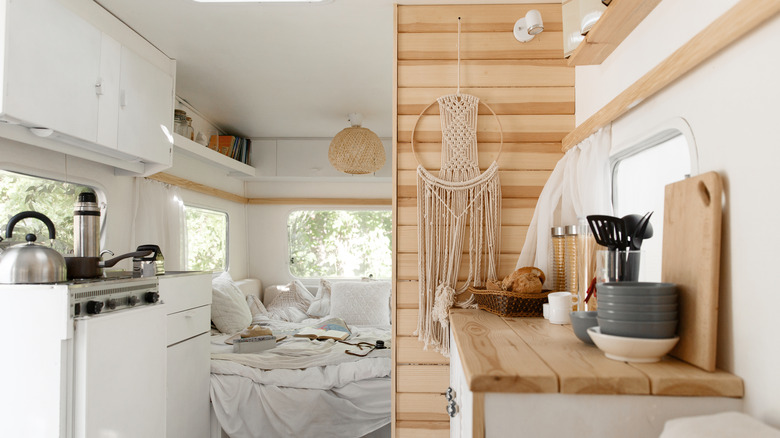Why DIYers Are All Buying This Item At Walmart
We may receive a commission on purchases made from links.
Want to update your bathroom or kitchen without going over budget? With over 100,000 various household items, including everything from clothing to health products, one of Walmart's latest budget-friendly home improvement products — peel and stick backsplash tiles — has got DIYers excited. This adhesive tile substitute comes in a variety of styles, is simple to install, and is comparatively inexpensive when compared to authentic tiles. Depending on size, materials, and labor, the average cost to retile an entire kitchen is around $10 to $95 per square foot, per Angi. Utilizing peel and stick tiles is the quickest, easiest, and most affordable option.
Walmart offers an exciting assortment of peel and stick tiles. Popular choices are typically priced around $2.73 per square foot or about $25 to $35 for a pack of ten. Depending on the size of your area, the total cost might range from $100 to $200. Often made from durable materials like vinyl, aluminum, or types of various stone, you can expect peel and stick tiles to last for several years, making them ideal for updating your kitchen, bathroom, or living spaces. they can also be used effectively on accent walls, fireplaces, and stair risers, suggests Tile Club. Since there is no need for grout, applying stick tiles is also a great way to keep costs low while experimenting with temporary designs.
How to apply peel and stick tiles
Although applying peel and stick tile is a simple process, there are some tools needed to accomplish the job accurately. In general, you will need scissors or a craft knife, a ruler, measuring tape, latex caulk, a screwdriver, and a pencil. Be sure to clean the area first and remove any outlet facias before the tiles are applied. Mark a straight line on the wall to establish exactly where the stick tiles should go. Remove any uneven edges, then starting in the corner of your wall, peel off the backing and press the tile firmly and evenly, using your hand to smooth it out.
Some decorative tiles may have an interlocking design. If you need smaller pieces to fit around windows, cupboards, or outlets, make a template using kraft paper then cut the tile to size with the knife, suggests The DIY Mommy in this YouTube tutorial. If needed, it's okay to remove and reposition the tiles, but doing it more than once may reduce its adhesiveness. Peel and stick tiles are versatile and can be used on most smooth, non-textured surfaces. However, if the surface or walls have been recently painted, allow them to dry completely (over ten days) before starting, notes Family Handyman.
Where to use peel and stick tiles
Peel and stick tiles can modify a variety of spaces, and installing them yourself will save money and time. For a chic and modern look, you might brighten up your kitchen or bathroom with white subway tiles, which provide an authentic ceramic texture. According to The DIY Mommy, adhesive backsplash tiles can be placed in most areas of your home, but be mindful of excessive heat or moisture exposure. Although many brands may be heat or water-resistant, they aren't recommended for use near gas stoves or on shower walls.
Other places to consider are the base of kitchen cabinets or bar islands, laundry room accent walls, or the back of bookshelves. For accent features, many DIYers opt for Walmart's colorful InHome Tuscan Tile as it's easy to cut and apply. Like peel and stick wallpaper, you might even try positioning decorative tiles on staircase risers to add character. Wherever you decide to place your peel and stick tile, it's certain to give your home a clean and fresh look.


